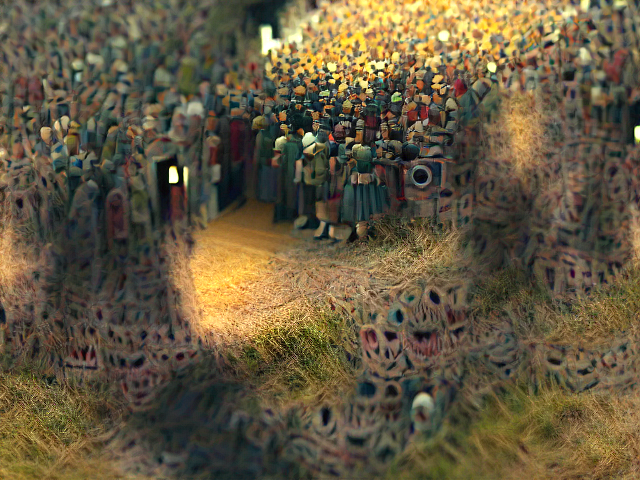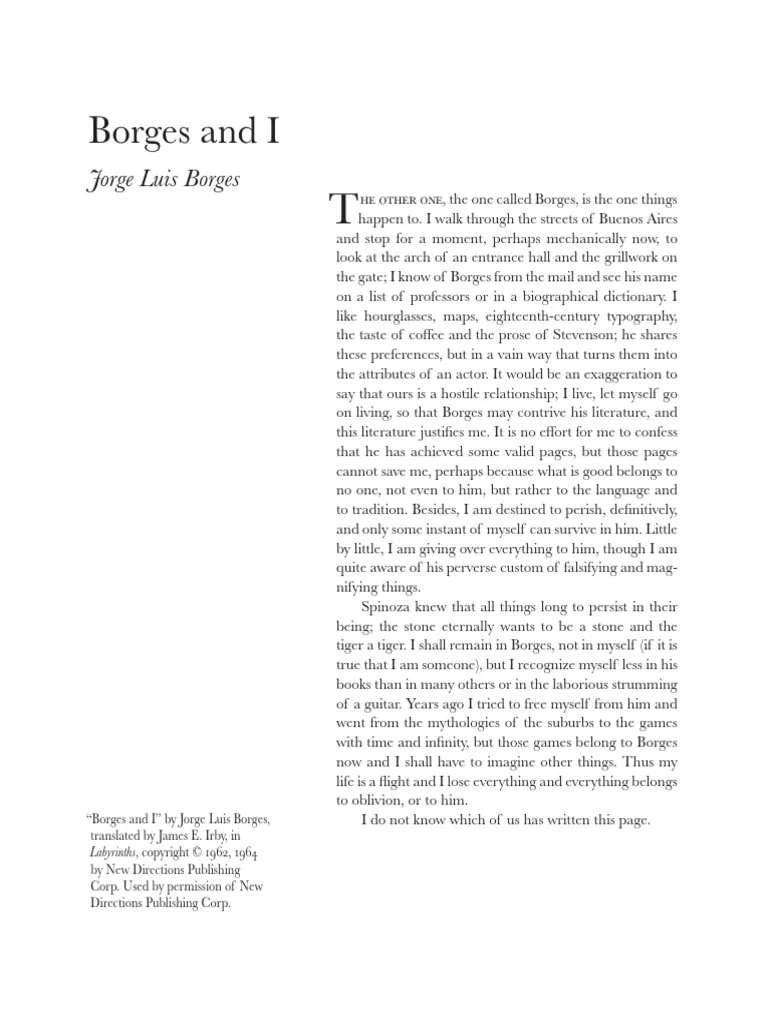30 Dec 2021
The underscore__ 2021 Reading Roundup
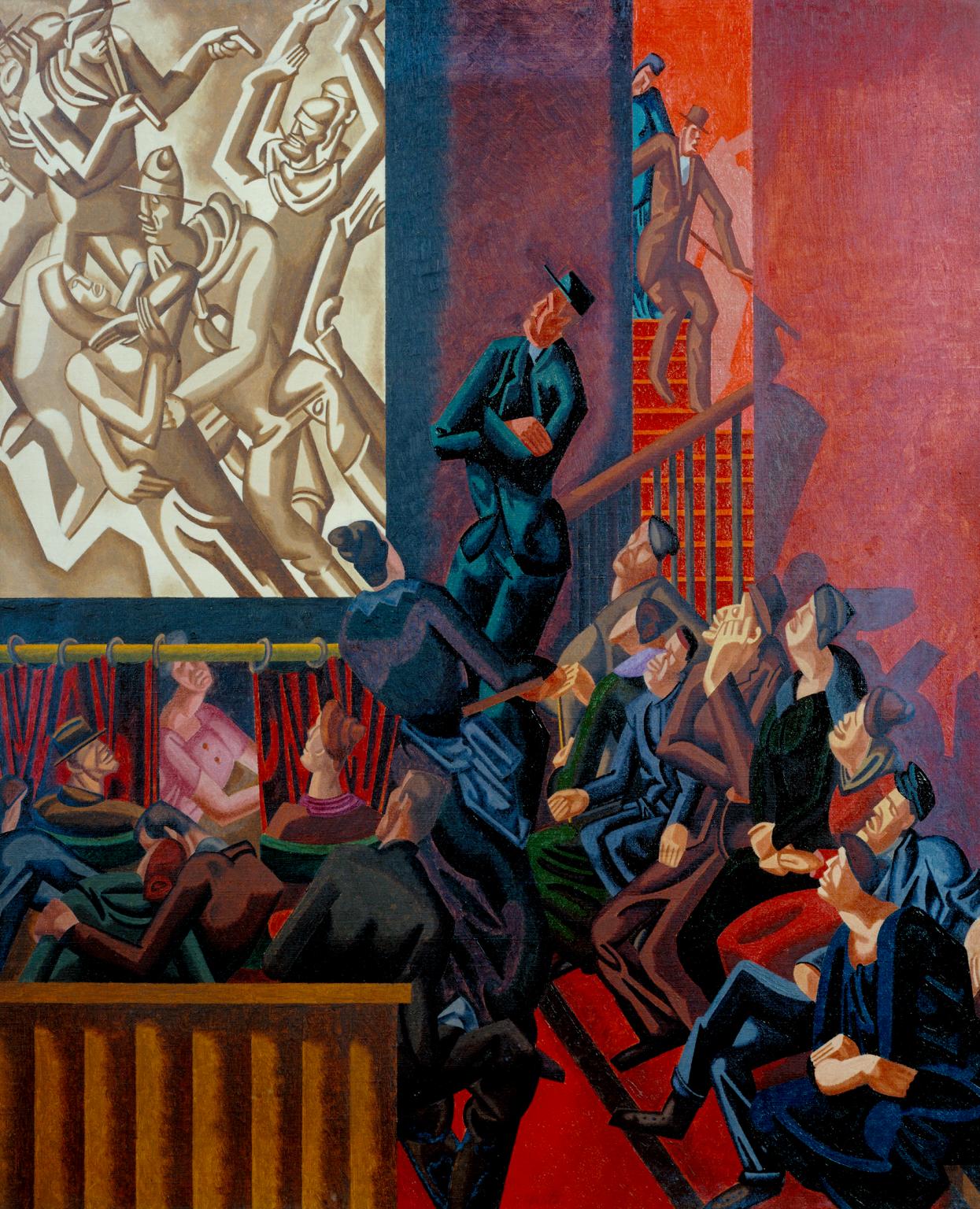
The reader became the book; and summer night
Was like the conscious being of the book.—Wallace Stevens
I hold my hands up: in last year’s roundup, readers may have noticed a glaring contradiction. Despite declaring from the outset that the works listed had “nothing to do with me”, despite rallying against “individual ego-fictions” and exalting “impersonal threads of connection”, in many of the sections I ended up talking about, well, myself. I told anecdotes, confessed feelings, gave opinions; all the telltale signs of the subjective. How was this possible? How could I so squarely contradict myself?
Now I put my hands down, in defence: I do not think this was a contradiction. In fact, no: there was a contradiction, but it was precisely the contradiction that defines books’ existence as such. For as much as they are undeniably objects with a particular form and content, the fact remains that much of the joy we get from reading books is that what we discover in them is ourselves, from a new vantage point. Works written decades ago genuinely seem to capture “our” unique essence, and allow it to be socially expressed. As such, books can neither be reduced to mere subjective feeling nor a fixed objective form, but rather must be thought as a mediation between the two: they allow the subjective to be expressed objectively, and the objective to be brought home to the subject. As Adorno stresses throughout Aesthetic Theory, art is simultaneously an object that is merely made like any other, as well as more than a made object; and it is this contradictory state that drives art’s self-development.
If I fell into “subjective” mode when discussing books last year, then, ironically it was because I was simply trying to be faithful to them as objects. I have been keen to maintain this dialectic in this year’s roundup; I have, however structured it slightly differently. Whereas last year I generally grouped texts according to genre, canon or tradition (for example “Psychoanalysis” or “Music and Post-Punk”) this year I have largely organised the works I have read this year through a set number of concepts1. This is to bypass a problem that can occur when grouping by canon or tradition, which is the deadening of particular works and their relegation to a familiar “home”. When too cosily seated in the canon, works ossify under an established set of signifiers. Works in this situation can only be approached from the outside: one must brush aside all the thick brambles of tradition, commentary and secondary literature before one can approach the work in-itself. My method here, however, has been to approach the books I read this year from within, starting from my experience reading them and developing concepts based on this. The benefits of this method are manifold: not only does one more faithfully communicate the “spirit” of particular works, but one also frees them from their established homes and puts them in dialogue with other texts. One thus sees works not as fixed points in a hierarchy of tradition, but as an intersecting mesh of lateral connections; one sees the works as alive.
We should therefore be very sceptical of the word “about”: the works listed here are not “about” these particular concepts, nor is what I have written “about” said works. Writing “about” things is generally very tedious. Instead, I have attempted this year to open myself up to the “inner life” of what I have read, and sought to only develop concepts and theories that remain immediately in contact with this pre-conceptual interior zone. The goal is a kind of radical immanence: the reaching of a level where it is not that I am writing “about” works, but rather that what I write is the works, which then are the concept. On this level, concepts harmonise with the work’s “inner life”; indeed, they allow it to blossom, to properly externalise itself. A process of blossoming: this is what the concept is, or should be.
There are certain thinkers, usually comfy academic philosophers, that scorn this approach to theory and criticism, an approach which Mark Fisher practiced most acutely. They class it as too “subjective”, too contrarian, too distant from any established canon to have any relevance. Let these thinkers have their undead labels which they tragically mistake for reality. They are oblivious to what they are missing: the brute, unnameable fact of life.
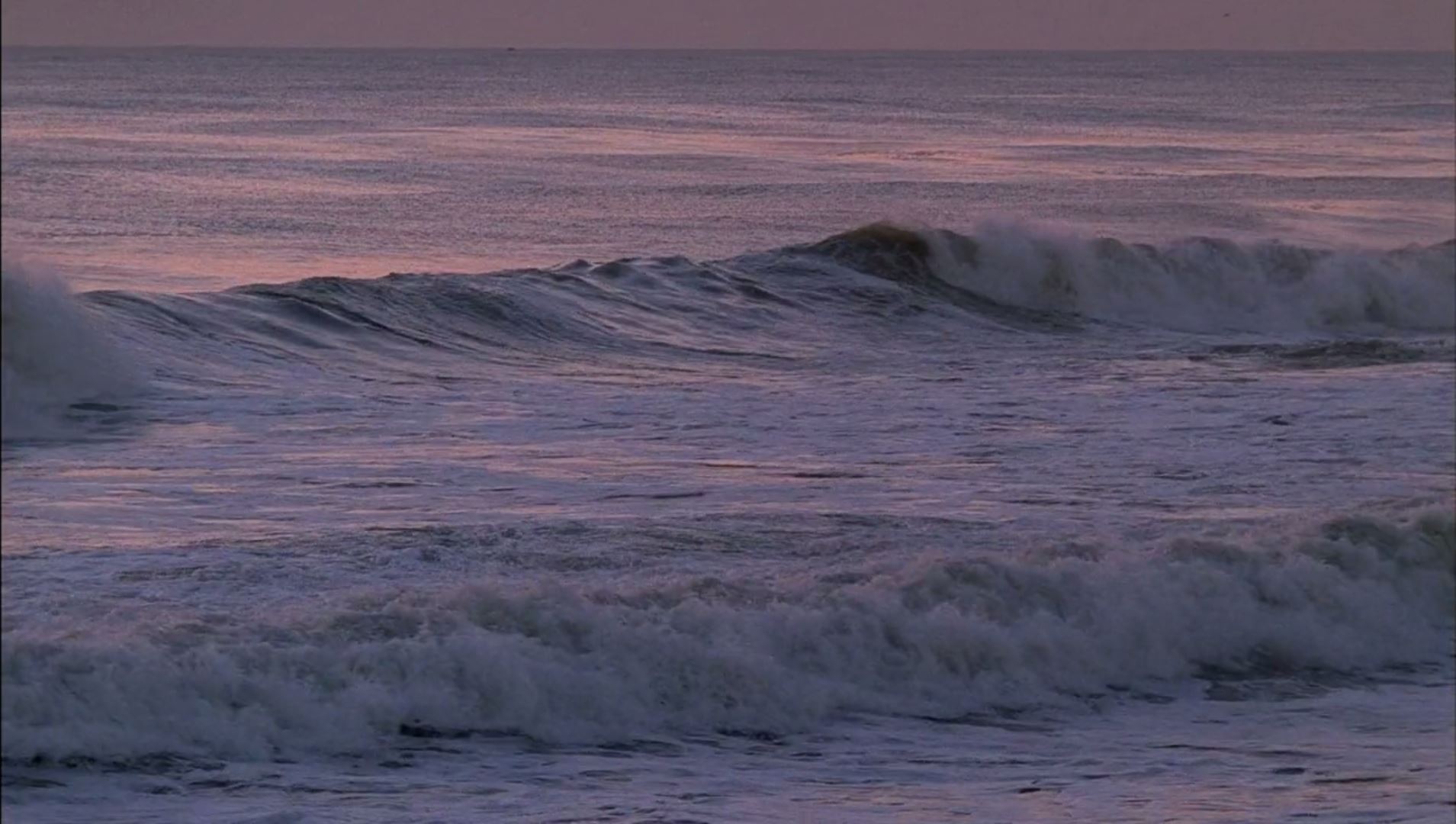
The Subject and Freedom
Marx and Engels, The German Ideology
Jean-Paul Sartre, Existentialism is a Humanism
Alain Badiou, Being and Event
Simone Weil, Waiting for God
Søren Kierkegaard, Fear and Trembling
Henrik Ibsen, A Doll’s House and The Lady from the Sea
Film
Pain and Glory (dir. Pedro Almodóvar, 2019)
What does it mean to choose freely? To choose one’s life for oneself, in spite of the dead weights of history that hang around our necks?
This is the question handled brilliantly by Ibsen’s The Lady from the Sea, a play that centres the marriage of a woman called Ellida and her husband Dr. Wangel, which is disrupted when a former fiancé of Ellida, an unnamed sailor who she was once deeply in love with, returns in town for a few days and proposes she leave with him. Ellida is the daughter of a lighthouse-keeper who grew up by the ocean, and has felt confined ever since she moved “in-land” to live with Wangel and his daughters from a previous marriage. Consequently, when the sailor returns to haunt her, she becomes obsessed, he symbolising for her a journey into the oceanic unknown, away from the confines of a strained marriage.
As the play progresses, Ellida is increasingly torn over whether to stay or go. On the one hand, she yearns for freedom: as the second wife of Wangel and financially dependent on him, she is keenly aware of her domestic enchainment and dreams daily of escape. On the other hand, her relationship with Wangel is strong and supportive, and she lives a relatively comfortable life. What really paralyses her, though, is not so much indecision but the fact that she is utterly incapable of making the choice freely. Without (financial or otherwise) independence from her husband, Ellida knows that any choice she makes will be for the wrong reason. Consequently, she spends much of the play begging Wangel to make her free from the marriage without retribution, not for the sake of necessarily eloping with the sailor, but simply to allow her to choose “of her own free will”. He refuses, although is consistently open to persuasion, and earnestly discusses the issue with Ellida at great length.
By the end of the play it seems dead set that Ellida will leave Wangel – who openly confesses to finding her perspective alien and confusing, yet patiently strives to understand it – in order to elope with the sailor. But when the ship pulls up in a nearby fjord and the sailor offers his ultimatum to her – that she must leave with him now, or never – Wangel finally grants Ellida her freedom to choose, resulting in a stunning twist:
WANGEL: …now you are completely free from me and mine. Now your own innermost life can take its true path again, because now your choice is free – and the responsibility is yours, Ellida.
ELLIDA: Free – and with full responsibility! Oh, that changes everything!
(The ship’s bell rings again.)
STRANGER: You hear that, Ellida? It’s the last bell. Come with me.
ELLIDA: I can never go with you now.
STRANGER: You will not?
ELLIDA: (clinging to Wangel) Oh, Wangel, I can never leave you after this.
WANGEL: Ellida – Ellida!
Ellida explains her choice to return to Wangel as follows:
WANGEL: Ellida, your mind is like the sea, it ebbs and flows. What made you change?
ELLIDA: Oh, don’t you see? The change came – as it had to come – when I could choose freely.
WANGEL: And the unknown? That has no fascination for you now?
ELLIDA: No fascination and no terror. I could have faced it – become a part of it – if I had only wished to. Now that I could choose it, I could also reject it.
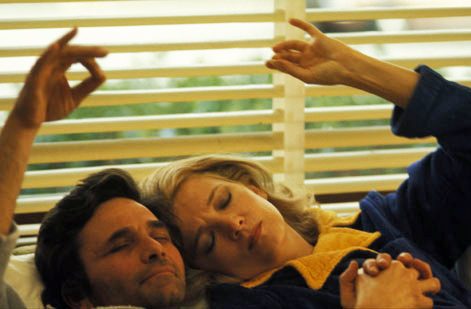
Masculine, Feminine
Shulamith Firestone, The Dialectic of Sex
Henry James, Washington Square
Henrik Ibsen, A Doll’s House and The Lady from the Sea
William Shakespeare, King Lear
Franz Kafka, The Castle
James Joyce, Dubliners
Samuel Beckett, Play
Ursula K Le Guin, The Dispossessed
Friedrich Engels, The Origin of the Family, Private Property and the State
Hannah Proctor, “Daddy issues, part II”, Unconsciousness raising (blog). Available here
Hannah Proctor, “Reason Displaces All Love”, The New Inquiry. Available here
Films
The Work (dir. Jairus McLeary, 2017)
Talk to Her (dir. Pedro Almodóvar, 2002)
A Woman Under the Influence (dir. John Cassavetes, 1974)
Despite advances in gender politics over the past few decades, as well as all our attempts to escape gender binaries, we still can’t shake off man and woman. While we know that they are simply symbolic labels that can, and should, be changed, they still maintain a power and utility. After all, identifying certain behaviours as “masculine” and certain behaviours as “feminine” often seems to cut right to the heart of matters; recognising that a particular person is, for instance, masculine in a certain way genuinely seems to capture their unique essence. We are especially aware of this fact when these labels are directed at us. Telling a man he is being very “masculine” by, for instance, not tidying up around the house, will produce a small trauma-shock in him. Instantly, he will be internally divided: on the one hand, he resists being reduced to a label, and insists on the situation being more complex than a simple binary; but on the other hand, he cannot deny the truth of the accusation, and that a woman would not have acted the same way. He suddenly becomes aware of his masculinity in a new light: it is a strange, alien force acting through him (or rather, them) that has hitherto decided their fate; they were merely a host.
Small shocks like this now and then are healthy. They remind us that our relationship with gender is never simple; that, in fact, gender is something ultimately external to us. Another way of healthily externalising gender like this is through art—particularly the works listed above. Some of these works, such as Shakespeare’s King Lear, were written over 400 years ago. Others, such as Engels’ The Origin of…, discuss the division of labour between man and woman in societies that existed thousands of years in the past. Nonetheless, somehow, we make an acute connection with them. That Nora’s desire to be free and leave her husband in A Doll’s House still stirs our soul, or that the complex dialectic of love and hate that characterises Nick and Mabel’s marriage in A Woman Under the Influence can resonate with us so deeply, shows that gender is far more than simply being performative; it is a ghost of history that haunts us at every second.
There is common advice about ghosts: one must face them. If the historical division of labour between man and woman has become sedimented at the level of our psyches, such that men generally fear getting in touch with their emotions and showing love or affection, and women perhaps feel insecure about asserting themselves, it is incumbent on us to face our fears and act in ways that have hitherto been alien to us. To get in touch with these sides of ourselves is not only beneficial to ourselves individually, but also throws into sharp relief the specialised division of labour that capitalism has bequeathed to us. Such introspective psychological work is not sufficient alone to refuse this division of labour, but it is necessary. Indeed, it is communist praxis.
Logic and Language
Immanuel Kant, Critique of Pure Reason
Immanuel Kant, Prolegomena to any Future Metaphysics
Ludwig Wittgenstein, Tractatus Logico-Philosophicus
Francois Jullien, On the Universal
Rudy Rucker, Infinity and the Mind
A couple of months ago, I was doing a little DT project with a few of the Year 2 kids from work, which involved designing fruit and veg kebabs for a character in a story they had been reading in class. As part of the project the kids were tasked with doing “taste tests”, involving them testing various fruits and vegetables while describing their flavours and textures. From an educational point of view, the objective of the task is to get them thinking about and describing their immediate reality from a perspective other than their own. For if you give a 6-year old child a slice of apple to describe, 90% of the time the response will be “nice” or “yummy”; words that don’t tell us anything about the apple at all, other than that it agreed with the child’s taste buds. The goal of a teacher in this scenario is to guide the child towards words that describe the apple as an object rather than purely subjective experience, as well as to then relate this experience of the object to another perspective (in our case, the character in the story they had been reading). In other words, the role of the teacher is to gently guide the student to step back from their immediate reality and reflect on it from afar, thereby allowing them to truly pay attention to it and conceptually understand it. (In this sense, teaching can overlap almost entirely with the practice of militant consciousness-raising!)
The joy of teaching, though, is that there is always that little margin of 10% where kids can surprise you in. In this particular lesson, one child, who I’ll give the name Rian, described the apple slice as “satisfying”, which immediately stood out to me as interesting. For “satisfying” is a more complex notion than “nice” or “yummy” because, rather than being a simple affirmation, it also hints towards a prior lack, a negativity; using the word “satisfying” implies a self-consciousness of a prior state of dissatisfaction. When I asked Rian what he meant by the word, although he unsurprisingly didn’t put it in these terms, he correctly noted that it was to do with the sound the apple made when it was being eaten, in particular the crunch, demonstrating a heightened awareness of the apple as an object.
The question is this: even though Rian, being six years old, was unable to articulate and define the concept of “satisfying” in precise terms, he could still correctly use it. How? The obvious reply to this is that he simply copied his parents: he heard them use the word “satisfying” when eating an apple, and copied them in conversation with me. No doubt this happened, but it still leaves something unexplained. After all, kids don’t copy any old word they hear, but rather words that, instinctively and logically, they know how to use. These “instinctual and logical” conditions must be in place before any linguistic mimesis takes place. And it’s when we start thinking about these conditions that language gets interesting, for they suggest that we extra-linguistically and unconsciously “know” language and concepts before we consciously know them. Rian, for instance, will have heard the crunch of an apple before knowing the word “satisfying”, and implicitly retained the sound despite not explicitly paying any particular attention to it. (After all, he had no word for it; he had never seen anyone focus on – or name – it before.) This unconscious sensory exposure to the sound of a crunching apple, then, contained implicitly within it the key to the concept of “satisfying”. What Kant would call the “intuition” of the crunching apple foreshadowed, and indeed set the stage for, the logically constructed concept of “satisfying”. Conscious concepts, then, only “work” insofar as they make a connection with an unconscious, pre-linguistic “intuition”. Indeed, more than this, these conscious and unconscious sides seem to mirror one another. Not only can we conceptualise our unconscious, pre-linguistic, sensory experiences (Kant’s “intuition”), but these concepts are able to faithfully express this experience, as well as explain this experience. In short, logical, conceptual explanations map onto our pre-conceptual, unconscious, sensory experience. (To my mind, this is deeply weird.)
Philosophers like Kant take this one step further. Faced with a barrage of chaotic sensory input – which Kant terms the “manifold” – how is it that we even know how to single out particular bits? How is it that Rian, unconsciously, retained the sensory sound of a crunching apple as a specific experience, before he even had the linguistic and conceptual tools to do so? Indeed, Kant asks, how is it that we even have a singular stream of consciousness at all? Kant unearths all these conditions of experience in the Critique of Pure Reason, and as a result reading him is often a dark, disturbing experience, as if one is diving deep into the mechanics of the unconscious. Dare I say that Kant can function as psychoanalytic therapy?2
The Horror of Being Seen: Fiction, Hyperstition and the Symbolic
David Graeber, Debt: The First 5000 Years
Walter Benjamin, Illuminations
Walter Benjamin, Selected Writings Vol.I
Theodor Adorno, Minima Moralia
Theodor Adorno, Aesthetic Theory
Immanuel Kant, Critique of Pure Reason
Alain Badiou, Being and Event
Wallace Stevens, Selected Poems
Jorge Luis Borges, Labyrinths
Jorge Luis Borges, Selected Poems
Jose Saramago, Blindness
Mark Fisher, “I met a man who wasn’t there: the ethics of Ashbless”, hyperstition (blog) (X)
Films
Stalker (dir. Andrei Tarkovsky, 1979)
Persona (dir. Ingmar Bergman, 1966)
The Double Life of Veronique (dir. Krzysztof Kieślowski, 1991)
Three Colours: Red (dir. Krzysztof Kieślowski, 1994)
In his seminal In the Dust of this Planet, Eugene Thacker posits that there exist three worlds. First, there is the world-for-us: the symbolic world in which we live, that exists for us as mediated through human language, symbols and meanings. Then, there is the world-in-itself: the Earth in all its “phantom objectivity”3, the world of nature that has been shown to “bite back” in the various catastrophes that have occurred through climate change. But Thacker’s real focus is on the final world, the world-without-us. This is the nebulous zone that looms behind the subjective world-for-us and the objective world-in-itself, a noumenal realm that resists even conceptualisation, for to understand it with human concepts would be to betray its very “essence”. The closest we can get to it, Thacker argues, is the aesthetic experience of horror: horror being, in his words, the “non-philosophical attempt to think about the world-without-us philosophically”4.
What the above readings and films do, each in their own way, is gently invert Thacker’s thesis. They make the following claim: not only is the world-without-us a world radically subtracted of all humanity, but the world-without-us is “in” language itself – making language itself inhuman. There is a fundamental horror that comes with the use of language, or even any symbolic image-thought in general: we leave behind the “inner life” of things and agree to settle to only deal with their appearances or names. This includes, by the way, our very selves: we identify ourselves not through some depth of inner feeling, but by external appearances: our name, the signifier “I”, or our face in the mirror. But the horrific thing is that these appearances which we take to be us, in themselves, are not us5. Symbols and images have a non-human life of their own, a life that, horrifically, takes over and infect “our” existence. Indeed, how we are seen and identified by society-at-large, the Big Other, seems to determine the course of our lives. If you are identified as a male from birth, this will then impact the very substance of who “you” are and how “you” behave for the rest of your life: all because of a symbolic marker that, ultimately, has basically nothing to do with you. There is an eerie temporal logic that accompanies this process: a fictional symbol inherited from the past simultaneously seems to set in stone the future, by impacting how we act in the present. Past, present and future seem to contract into one – our Fate6. This is, I think, precisely what the Ccru meant by hyperstition, or the process by which fictional quantities make themselves real7.
A final anecdote, to end on: when I was in my final year of university, I ran to be a sabbatical officer for our students’ union. Doing this involved running a two week campaign, where posters of my face were all over campus, I was doing multiple lecture shout-outs a day, giving interviews, talking to random students all day, and so on. After only one day of campaigning, I remember collapsing while sitting with my friends with my hands over my face, despairing that I didn’t feel like a real person, like my entire experience had become completely hollowed out. I’d never been so socially exposed in my life, or subordinated so much of my entire being to an image, a walking-talking mannequin repeating the same catchphrases all day. As time went on I adjusted to this, but the two weeks still possessed an oddly unreal quality, spending most of my time entrapped in a public world of electioneering that felt so resolutely fake and yet was stubbornly real…
At the end of the campaign, the results came in. I had lost the election, coming in a respectable third place. We celebrated, heartily.

Weird Fiction and SF
H.P. Lovecraft, The Shadow over Innsmouth
Virgilio Piñera, Cold Tales
Jorge Luis Borges, Labyrinths
Philip K Dick, VALIS
Ursula K Le Guin, The Left Hand of Darkness
Excavate! The Wonderful and Frightening World of The Fall
H.P. Lovecraft, “Notes on Writing Weird Fiction”. Available here
The Outsider • WIRE #183 • May 1999—
Tom Herrington interviews Mark E Smith—
TH: In the past you’ve mentioned that you like composers such as Schoenberg and Stockhausen. I was wondering whether you picked up on that stuff from reading Philip K Dick, who was a big fan of that kind of music, and would drop subliminal references to it into his books. Were you aware of that connection?
MES: That’s interesting. No, I never knew that, but it explains a lot, because his stuff was so layered at times, like 15 things going on at once in some books. I’ve seen biographies of Dick and I’ve had to put them away, because it’s horrible. It breaks your heart, the shit he had to put up with: bumming meals off students, things like that, just to live, and that was just before he died. I go on about not getting any royalties, but he got nothing. They pissed around with Blade Runner for about five years before it came out, kept changing the script, and he’s broke, health’s gone, just wondering where he’s going to get something to eat, and he dies like a fortnight before Blade Runner comes out. So I’m not that bad off.
TH: Dick, like a lot of the writers you’ve said you admire, was interested in the notion of psychic time travel; attempting to decipher the present by intercutting it with past and future events, which has been a theme in a lot of your work.
MES: Pre-cog he used to call it. That’s happened to me so many times. I’ve had a dream, or think I’ve seen something in the paper about an event, and six months later I’ll see it. It’s weird. You won’t believe this, but I remember the last time we toured Yugoslavia, I said to the band, “Something’s going to happen here”. They said, “Why? It’s lovely”. But I could feel it. I could feel it. I could bloody… I could virtually see it, in the audience, above the audience. I’d come off stage, and say, “It’s fucking weird that audience”. I’d never been frightened by an audience, you know? The group go, “No, it’s great, the birds are lovely” and all that. And it was; they’re better dressed than us. But every time I went out I got in trouble with the police or a soldier; every fucking time. I got stopped; I got chased by soldiers once. I thought: there’s something going on here, I don’t like it, you know what I mean? […] I’d be talking to somebody and think they were crying. They weren’t.
MES: [laughing] It’s weird isn’t it? I don’t like that too much. I don’t have that so much now. It used to shit me up when I was a teenager. [He shivers a little] Some things are better you don’t know; don’t want to know. Don’t want to forecast or hear about.
Marxism and Historical Materialism
Marx and Engels, The German Ideology
Walter Benjamin, Illuminations
Walter Benjamin, Selected Writings Vol.1
Theodor Adorno, Minima Moralia
Shulamith Firestone, The Dialectic of Sex
Friedrich Engels, The Origin of the Family, Private Property, and the State
David Graeber, Debt: The First 5000 Years
Karl Marx, “Theses on Feuerbach”. Available here
Louis Althusser, “Beyond Workers Inquiry”. Available here
James Crane, “Notes on Marx’s 1844 Manuscripts”. Available here
James Crane, “From the Activity of Logic to the Logic of Activity”. Available here
Walter Benjamin, “Theses on the Philosophy of History”. Available here
Films
Pain and Glory (dir. Pedro Almodóvar, 2019)
Man with a Movie Camera (dir. Dziga Vertov, 1929)
One of the most telling things Margaret Thatcher said was in a 1987 interview where she proclaimed that “there is no such thing as society. There are individual men and women and there are families.” This is a statement that has been much-quoted and derided over the past thirty years, but also one that, to be frank, we have not succeeded at countering. Even if we all scoff at Thatcher’s statement in theory, in practice it is still the dominant ideology of the day. For most people, their individual careers and their family really are the only thing that immediately matter. Forty years of community destruction by neoliberalism – the decimation of trade unions, community centres and more – have had their desired effect: people generally no longer have any personal link with “society” or “community”, and instead can only relate to it passively and indirectly as mass media consumers or State-subjected “taxpayers”. Emptied of concrete, material content, “society” has become a vague buzzword, easy to repress, easy to ignore.
As a deluded leftist, I maintain faith in a world where society is something concretely meaningful, where collective living, care, and solidarity is embedded into our everyday lives. I should stress, however, that I’m deluded. Not because I think I’m wrong, but rather because I hold fast to this belief even though it seems to find absolutely no social expression, anywhere, despite how commonsensical it is. The idea of actually building communal institutions, of building relations that go beyond the familial or the economic, is so bafflingly alien to so many people that it makes me want to bang my head against a wall. Depressingly, this level of incomprehension is recapitulated at the level of theory. For society-scepticism goes further than just Thatcher. Three “society-sceptic” positions can be identified today:
-
Society doesn’t – and shouldn’t – exist. (The Thatcherite position)
-
Society exists, but only as an illusion laid on top of the natural world of objective facts. (The position of STEM and positivistic natural sciences.)
-
Society exists, and can be measured, quantified and studied as an object. (The position of the dominant strain of empiricist social sciences today.)
Needless to say, none of these three positions actually understand society, or social relations in general, as social. In each their own way, they are inadequate. The Thatcherite position simply denies that there are any relations between people that are not filial, which is blatantly untrue. Position 2) essentially tries to wish away social relations as a muddying influence, and would prefer to operate under the assumption that it can reach objective facts cleanly and directly (in other words, absent of any social or subjective mediation) through scientific methods. Finally, position 3) can only get a hold on society by reifying it, reducing it to demographic statistics and other frozen symbols. In all three positions, the “social” bit is bracketed out as a disturbing influence. For the social sphere is one held together by shared beliefs about the world, shared languages, shared symbols, shared stories, and shared rituals. For each of the three positions listed above, this is a problem—a threat—that needs to be neutralised. After all, how is one to study beliefs? Surely “they’re subjective”, a matter of one’s opinion? And consequently, are they not prone to constantly change with the winds of Zeitgeist?
Faced with such intellectual, cultural, and political poverty, the deluded leftist is prone to despair and hysteria. That is until, after a long journey, they stumble upon their home, that much-maligned spectre, that political, cultural, and intellectual tradition that capital likes to pretend never existed: Marxism.
The key reason Marxism matters so much is that it approaches the social as social. Marx’s critique of (commodity-)fetishism, placed right at the front of Capital (a telling clue), is precisely a critique of humanity’s tendency to take the man-made symbols it fictions for itself as “objective reality” or, in an earlier age, “signs from God”, rather than what they are: man-made. Marx’s particular target for this is bourgeois political economy, which fetishizes capital and treats “the economy” as if it were an autonomous, abstracted realm that exists of its own accord. Marx’s rejoinder to this is that “the economy” is instead concretely made by everyone, every day, and cannot exist without this human practice8. (David Graeber’s Debt performs this demystification even better than Marx himself.) And if “the economy” is something that we as humans make – in other words, fiction – then this implies we have some degree of choice over it, that a decision needs to made regarding it, a stance taken.
What Marxism amounts to, then, is a discovery of human autonomy, human freedom, and a delimitation of its proper sphere. It is, in fact, a philosophy of profound maturity: Marxism makes no excuses, it pawns nothing off to “nature” or “objectivity”, and instead holds a stark and brutal mirror up to humanity that says: this is what you are doing to yourself. You are doing this, not anyone else. Now that you know that, what are you going to do about it? What action are you going to take? Just as the depressed person recoils from being told that they need to change, so Marxism scandalises: it studies capital not as a “natural” or “objective” phenomenon (as mainstream economics does) but as an explicitly subjective – and therefore social – one9. (Never forget that money only exists because we all socially believe it exists.) Marxism, that Gothic spectre, brings the ghosts out of the closet, exhuming the repressed political element that “objective” economics likes to pretend doesn’t exist.
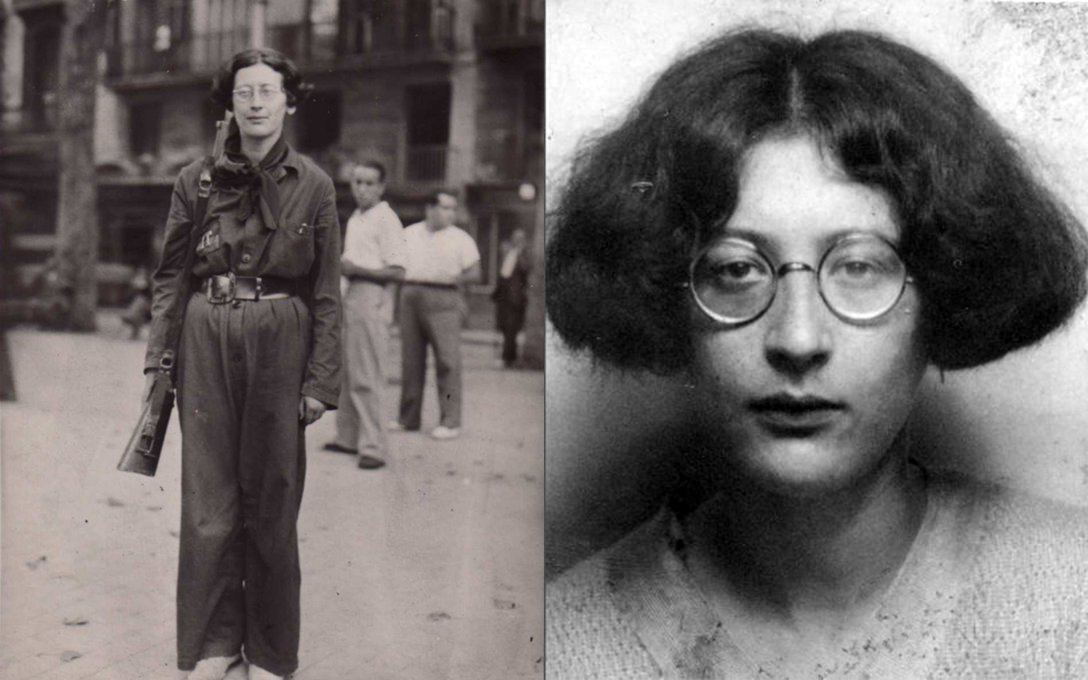
Faith, Spirituality, and Sacrifice
Simone Weil, Waiting for God
Simone Weil, “Human Personality” (X) and “The Needs of the Soul” (X)
Søren Kierkegaard, Fear and Trembling
William Blake, Songs of Innocence and Experience
Franz Kafka, The Metamorphosis and Other Stories
Philip K Dick, VALIS
St. Augustine, Confessions
Heraclitus, Fragments
The Dhammapada
The Bhagavad Gita
The Tao Te Ching
T. S. Eliot, The Waste Land and other Poems
Emily Dickinson, Poems Selected by Ted Hughes
Friedrich Engels, “On the History of Early Christianity”. Available here
Documentaries and Films
Koyaanisqatsi (dir. Godfrey Reggio, 1982)
The Power of Myth by Joseph Campbell and Bill Moyers, available here
Testament by John Romer, available here
Sea of Faith by Don Cupitt, available here
Gnostics10, available here
In every way it has come to this – that what one now calls Christianity is precisely what Christ came to abolish.
—Kierkegaard
If you read anything by Simone Weil – the trade union activist turned Christian mystic – you will be struck by just how charged with faith her words are. As one reads of how, when reciting the poem “Love” by George Herbert to herself, Weil found herself possessed by Christ, one feels a similar swelling movement within oneself, a similar yearning for the spiritual11. And yet, despite all this, she was a reluctant convert. Weil was never baptised despite constant pressure from her mentor Father Perrin, and only began to pray five years after her conversion to Christianity in 193712. (She even saw this as her vocation; she sought to be an “apostle to the Gentiles,” planted at “the intersection of Christianity and everything that is not Christianity.”) Author C. S. Lewis once recounted a similar feeling, noting that he converted to Christianity at the age of 30 “kicking, struggling, resentful, and darting his eyes in every direction for a chance to escape”13. And this year, I must confess – though I wouldn’t yet call myself a convert – that I found the same happening to me. As I wrote in last year’s round-up, I grew up with basically zero religious background. And yet, this year, almost by accident, I stumbled upon faith; or rather, faith found me. By spring, it had wormed itself into the film club I do with Nick and Alex, and we found ourselves watching documentary upon documentary on the history of Christianity and other religions. Although we did not – and do not – know exactly what we’re looking for in faith, something seems to be there, and we cannot help but following the thread.
What is this strange magic of religion, that pulls people in even though they consciously resist? For me, at least, it has something to do with the remarkable honesty of it. This may, initially, appear counter-intuitive. After all, with all the myths and parables, and all the corruption and dogmatism existing in institutionalised religion, how on Earth can one call it honest? The answer, I think, lies in two moves: 1) realising that religious texts communicate Truth poetically rather than literally; and 2) drawing a strict dividing line between institutionalised religion and the individual’s spiritual experience. My “falling” into faith, after all, has principally been guided not by the Church, but a series of mystic Outsiders – Simone Weil, William Blake, Søren Kierkegaard, Philip K Dick, Joseph Campbell, and Emily Dickinson, among others. Compared to institutionalised religion, what’s striking about these individuals’ works is that they are not trying to sell you anything, or even convert you. They are simply trying to honestly communicate the depths of their experiences to you, in the way they feel most appropriate. What’s more, these radically honest acts of testament usually derive from and reflect on a great deal of pain, of suffering: what Simone Weil took to calling “affliction” [malheur]. Reading such works it is nigh-on impossible to not feel any sense of solidarity or common feeling; indeed, it is only possible to fail in this if you are not in touch with the pain and fear that exists, necessarily, within you.
This, then, is perhaps the “magic” of faith, religion, or spirituality (whatever you want to call it): the connection, through a ritualised practice of raw emotional honesty and self-sacrifice, to a kind of shared “level zero” of experience, a dark well of pain and suffering, but also—crucially—faith and love. Call it God, call it the Body Without Organs, call it the Void, it doesn’t hugely matter. It’s there in us for all to touch.

Art, Aesthetics and Criticism
Theodor Adorno, Aesthetic Theory
Theodor Adorno, Minima Moralia
Walter Benjamin, Illuminations
Walter Benjamin, Selected Writings Vol.1
Jacques Maritain, Art and Scholasticism
Robin Mackey et al. (eds.), Speculative Aesthetics
T. S. Eliot, “Tradition and the Individual Talent” Available here
Simon Reynolds, “on the roles of the conceptual musician and the conceptualising critic”, Thinkige Kru (blog). Available here
Ursula K Le Guin, “The Carrier Bag Theory of Fiction”. Available here
Ryan Ruby, “Reading the Room”, Sidecar (blog). Available here
Kazimir Malevich, “Chapters from an Artist’s Autobiography”. Available here
Owen Hatherley, “Forwards Not Forgetting”, kino fist (blog). Available here
John Merrick, “Good Bourgeois Subjects”, Soft Punk Magazine. Available here
Claudio Magris, “The Novel as Cryptogram”, New Left Review #95. Available here
Film
Rivers and Tides (dir. Thomas Riedelsheimer, 2001)
One of Adorno’s central arguments in Aesthetic Theory is that art undergoes, in-itself, a process of increasing autonomisation throughout history. To see this in action one need only visit, one by one, the major art galleries in London. Start at the Sainsbury Wing of the National Gallery, for instance, and one will find a vast collection of early Renaissance paintings from 13th century Italy onwards, featuring various images of the crucifixion and other stories in the Christian tradition. Many of the pieces were originally designed for particular churches, and have subsequently been lopped off, shipped across the Channel, and placed lifelessly in a London gallery room. The impression upon seeing these works is overwhelming: this is an alien world, a world that only makes sense with that bedrock of religious storytelling that has now completely perished, and looks deeply out of place in a modern gallery. Proceed then to the Tate Britain, and one will find portraits of various nobles and aristocrats, and the beginning of landscape painting. Before one’s eyes, one sees art rebelling against religion to serve its new masters: capital and the State, in the form of the landed gentry and the swelling merchant class. Finally, in the Tate Modern, one witnesses the birth of modern art, the historical moment where art, achieving self-consciousness, seeks to throw off all external masters – religion, the State, capital – in order to become the master of its own destiny, its own conditions of existence.
In other parts of the Tate Modern, one sees the next stage of this process, the moment we are in now, where art’s self-consciousness, increasingly deracinated from any historical or mythological tradition, has begun to devour itself completely. The artwork of postmodernity – and I confess this applies far more to the visual arts than other mediums, though can still be traced in the latter – has a striking impotence to it. Artworks present themselves as a series of odd, detached fragments, frozen by a cloying and neurotic hyper-self-consciousness that clothes itself in trendy art-babble in order to hide a stunning lack of content underneath. (Simon Reynolds identified this tendency in contemporary electronic music in his essay “The Rise of Conceptronica”.) Absent a sense of historicity, art has lost confidence in itself as art; instead, it has begun again to rely on zones outside itself for meaning and validation (hence the resurfacing of tedious and didactic “political” art or art that is made purely for the therapeutic “self-expression” of the individual), ironically retreating into a prior state of subservience that it had hitherto wished to escape.
I don’t pretend to have a definitive answer to this, but if I lay hope anywhere, guided by the readings above, it is in a revived attempt to build what are increasingly rare in our cultural landscape: scenes. Artistic scenes have historically been the collective incubators that have nurtured basically all of the great artworks and artists of modern times. Scenes can best be thought of loose collective milieus, free associations of artists of all stripes that were built around a common infrastructure: key figures, newspapers, printing presses, record labels, late night cafes, and so on. Not only could scenes be networks of care and support, but they also gave art a protected realm of critical self-reflection and dialogue among like-minded individuals, that allowed artists to grow and mature under the mentorship of others, even if they disagreed with them. As such, in scenes traditions were brought to life, precisely because they were discussed, negated, and played with. Given a direct contact with tradition in this way, the artworks birthed out of scenes were capable of both having historical force and a striking novelty, which was precisely the promise of modernism.
In that people still make friends and connect via art, scenes obviously still exist today. What seems to be lacking, however, are scenes’ self-consciousness of themselves as scenes14. As communal infrastructure becomes harder and harder to maintain under neoliberalism – yet another travesty of the housing crisis – any scene that emerges seems to fizzle out all too quickly, never reaching the point where it is confident enough to assert itself as a scene. For artists interested in art and politics, this is the intersection point we should be focused on. Rather than the unsatisfying compromise of “political art”, artists interested in politics should leave their art to be what it is – art – and focus their political practice on the building of accessible, communal and sustainable spaces for artistic expression. (One contemporary struggle on this front is the fight to turn The Ravensbourne Arms in Lewisham into a community-owned live music pub, which you should support.) Is this hopeless? Idealistic? Possibly; probably. But you’ve got to believe in something, right?
Love, Care, and Kinship
Wallace Stevens, Selected Poems
Tom Whyman, Infinitely Full of Hope
Ursula K Le Guin, The Dispossessed
William Blake, Songs of Innocence and Experience
Shulamith Firestone, The Dialectic of Sex
Sam Thoburn, Halfway to Everywhere
Simone Weil, Waiting for God
Henry James, Washington Square
Theodor Adorno, Minima Moralia
Franz Kafka, The Castle
Henrik Ibsen, A Doll’s House and The Lady from the Sea
William Shakespeare, King Lear
Friedrich Engels, The Origin of…
Emily Dickinson, Poems Selected by Ted Hughes
Andrew Key, “Late Sleep Early”, Lugubriations newsletter. Available here
Films
The Before trilogy (dir. Richard Linklater, 1995–2013)
A Woman Under the Influence (dir. John Cassavetes, 1974)
In his wonderful essay on being a social care worker in a residential mental health project in Sheffield, Andrew Key – author of the equally wonderful roland barfs film diary newsletter – tells the following anecdote that captures, very acutely, a certain experience of love:
A little while ago I took someone I’ll refer to as E, one of the residents, to a blood test. Some anti-psychotic medications require very regular blood tests because they can encourage your body to fuck itself up if you take them every day for years, as many people with treatment-resistant diagnoses of schizophrenia are legally required to do. E is a big guy who can be quite boisterous, but when the needle when into his arm and he winced, I was filled with a painful, deep, tender love for him. Not pity or empathy: love. The love I feel in fleeting bursts at work is painful and complicated and it would probably be better to not feel it. It’s a job. I scrub a lot of toilets. Often, I’m basically a very patient janitor with a capacity to listen calmly to a distressed person. But when your job is to care for vulnerable people, and you spend time with them and see them as individuals rather than as a set of symptoms to cure or problems to fix, you will very likely begin to love them, sometimes.
Love, often, catches us off guard. As someone who works with young children whose job also involves a lot of very menial care work, Key’s words ring very true to my heart. I started the job at my current school in September last year, and this January, when the third lockdown was announced, I was very suddenly asked to teach and look after a class of approximately ten “key worker children” all by myself. This lasted two months, was incredibly stressful due to the kids misbehaving so much, and was an experience I received no additional financial renumeration for. Nonetheless, when schools opened again as normal in March, I caught myself missing the chats and jokes I used to have every day with the kids, and the space to bond with them in an intimate and educational way. When the end of the school year came around in July I was even more emotional, for in reflecting on how much they had grown over the course of the year, I also realised how much, in I becoming invested in them, they had changed me.
There are these moments, in love, where you become suddenly aware of just how bound up with another person you are. The jolt of love’s arrow: the smallest thing just happens to occur, and unexpectedly it reveals to you just how invested you are in this relationship, just how much you care for this other person. It’s not really a cerebral or conscious agreement – indeed you might find parts of their character disagreeable or difficult sometimes – but rather a deeply embodied experience of intimacy and felt connection. Last month my partner, after over a year of work stress, redundancy and grief, got a poem published in an anthology (make no mistake, this is no “small thing”!), and after so long trying, has begun to write again regularly, seeming the most content I have ever seen her. When I see her poem printed out, or her writing at her desk, I am overcome with this vast and swelling sense of love, pride, and joy. The miracle of love is that by loving and caring for someone else, you not only help them become more fully themselves, but also yourself. This is love’s paradoxical dynamic: lovers become One by becoming Two15. And this is a process that involves not only the deepest joy, but also the deepest pain; after all, what is grief but that experience of “felt connection” continually striving to self-persevere?
In a world that is so stubbornly bad, these connections, somehow, still occur. Love graces us in “fleeting bursts”, a flash of light where we presumed only darkness; and, having seen it, we are determined to stay true to it. It is this experience, of staying true to that burst of light amidst a wretched world that the works above dramatise and reflect on. And common to all of them is a certain darkness that love rebels against: property, indeed, capital. Ibsen’s Nora in A Doll’s House, for example, leaves her possessive and demeaning husband Helmer in an act of self-love, bravely attempting to build the (financial) independence she had hitherto been denied. In Henry James’ Washington Square, meanwhile, Catherine is prevented from eloping with her love, Morris Townsend, because her patronising father, a wealthy doctor, does not approve of him, and will withhold her sizeable inheritance from her if she does. Fictional and real life tales of this sort abound. In all of them, we see capital, the ultimate symbol of exchangeability, threatening that which promises to be unique and unexchangeable: love. Just as money’s symbolic value is its capacity to be exchanged for something else, so capital threatens to make love about something other than itself: money, status, convenience. People often complain of their friends or family members staying with their partners for the “wrong reasons”. Implicitly, without even realising it, they are critiquing capitalism.
It is precisely in this sense that communism, Red Plenty, should be understood as a liberation of love. Contrary to their image of being drab, joyless authoritarians, communists strive for a free world where love, free from psychosexual repression, is able to diffuse and spread over the whole social sphere16. And we only get there by struggling, now, to stay true to the love in our lives, by paying attention to it and faithfully working to cultivate it. Ursula K Le Guin once said that “love doesn’t just sit there, like a stone, it has to be made, like bread; remade all the time, made new.” Adorno said it even better:
Loving means not letting immediacy wither under the omnipresent weight of mediation and economics, and in such fidelity it becomes itself mediated, as a stubborn counter-pressure. They alone love who have the strength to hold fast to love.

Footnotes
-
Editorial notes: the below is a round-up of the many things I read and watched this year, including a mixture of books, poetry collections, short stories, essays, blog posts, newsletter entries, documentaries and films. A handful of things have been left out, some because I was largely uninspired by the work, others because, despite their quality, I could not honestly categorise. ↩
-
Psychoanalysis, after all, owes a debt to German idealism; Freud read, and was inspired by, Kant. ↩
-
In The Dust of this Planet, p.6 ↩
-
Ibid, p.9 ↩
-
To borrow from Lacan and Fisher, the subject is not those appearances, but that null point which identifies with those appearances. Fisher: “Identitarianism assumes that people are condemned to identify with the positive (ethnic/ gender/ nationalistic) predicates they possess, as if their subjectivity were exhausted by those properties. Exactly the opposite is the case: the authentic dimension of subjectivity consists not in any positive identity but in that which makes identifications. Seemingly bizarrely, this is why the (Lacanian) cogito - from which, not only all biosocial facticity but any phenomenological qualia (the texture or depth of experience) have been evacuated - can serve as the basis for collective politics.” (“The Proletarian Cogito”) ↩
-
Reflecting on this, it is unsurprising that the themes of the Double and Fate endlessly recur in art and literature – for they simply stem from and reflect on the originary condition of language. ↩
-
It is difficult to understand or get into much of the Ccru’s terminology, because they intentionally doused it heavily in so much cyberpunk sheen that it appears as if it came from another planet. In spite of this, I am increasingly convinced that they were onto something with the notion of hyperstition. An accessible introduction is provided here. ↩
-
In this Marx shares a critical philosophical genealogy with Kant, whose “Copernican revolution” reminds us that, far from perceiving objects in themselves, we only ever experience them as subjectively mediated appearances that only “appear” to us insofar as they concur with our (subjective) perceptive faculties. ↩
-
The opening and closing theses to the “Theses on Feuerbach” give ample evidence for this. Thesis I: “The chief defect of all hitherto existing materialism… is that the thing, reality, sensuousness, is conceived only in the form of the object or of contemplation, but not as sensuous human activity, practice, not subjectively.” And the famous final thesis: “The philosophers have only interpreted the world, in various ways; the point is to change it.” ↩
-
If you do watch Gnostics, please note that while episodes 1 and 2 are superb – the second featuring an amazing extended sequence with Brian Blessed playing a Gnostic Catharist monk – episodes 3 and 4 are basically a confused mush and not hugely worth your time. ↩
-
See Waiting for God, p.68-9 ↩
-
Leslie Fiedler, “Introduction” in Waiting For God, p.25. ↩
-
C. S. Lewis, Surprised By Joy, p.229. ↩
-
Another problem, I think, is that where scenes do exist they are entirely mediated by money or careerism. For instance, a scene might emerge around a particular writing workshop, but in that beliefs professed by the leader of that workshop are mediated by the need to sell places for this workshop, they become tainted by the profit motive. Similarly, scenes exist in academia, but – in the humanities and social sciences at least – these seem to basically consist of people using a shared set of buzzwords to posture endlessly and promote their own careers. In the first, the collective potential of the scene is co-opted by the cult of capital. In the second, it is by the cult of the individual. Neither actually constitutes a scene in any meaningful sense, because there is no love here, no fraternity, no solidarity. ↩
-
Or rather, “Many”. “Two” applies for romantic love, but in this is far from the only kind of love possible, as my essay “Loving Folk” in June discussed. ↩
-
Firestone, Dialectic of Sex, end of Ch.7: “Eroticism is exciting. No one wants to get rid of it. Life would be a drab and routine affair without at least that spark. That’s just the point. Why has all joy and excitement been concentrated, driven into one narrow, difficult-to-find alley of human experience, and all the rest laid waste? When we demand the elimination of eroticism, we mean not the elimination of sexual joy and excitement but its rediffusion over—there’s plenty to go around, it increases with use—the spectrum of our lives.” ↩

